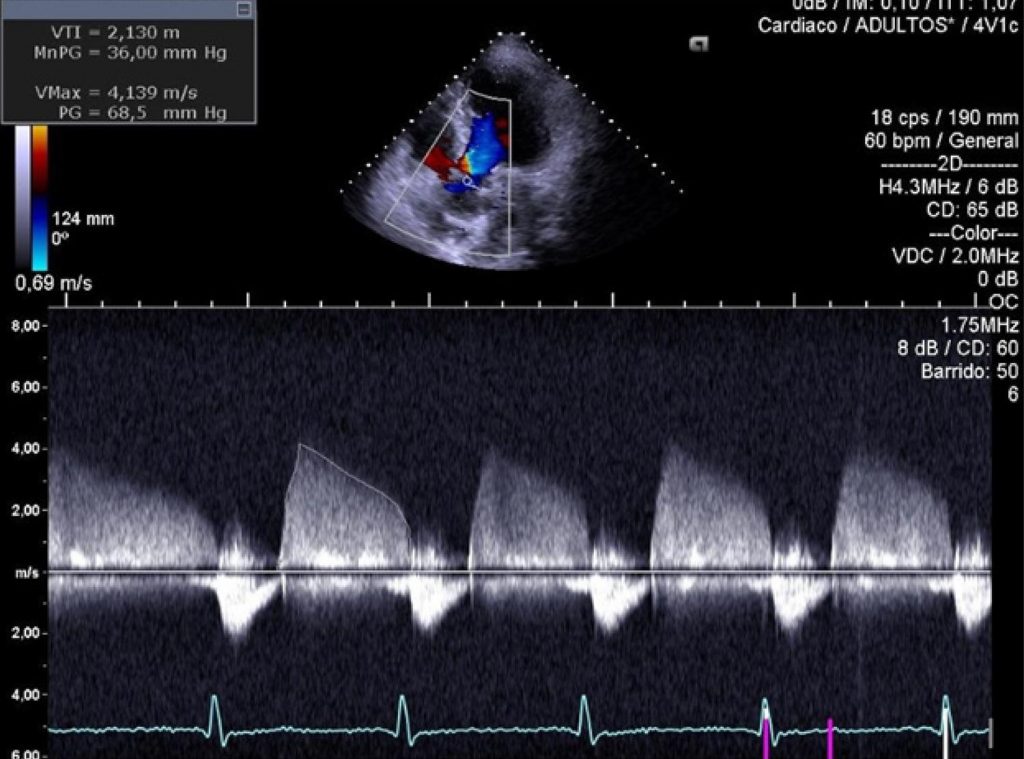Arq. Bras. Cardiol. 2020; 115(2): 253-260
Velocity-Time Integral of Aortic Regurgitation: A Novel Echocardiographic Marker in the Evaluation of Aortic Regurgitation Severity
This Original Article is referred by the Short Editorial "Assessment of Aortic Valve Regurgitation by Echocardiography: Basic and New Concepts".
Abstract
Background
Echocardiography is essential for the diagnosis and quantification of aortic regurgitation (AR). Velocity-time integral (VTI) of AR flow could be related to AR severity.
Objective
This study aims to assess whether VTI is an echocardiographic marker of AR severity.
Methods
We included all patients with moderate or severe native AR and sinus rhythm who visited our imaging laboratory from January to October 2016. All individuals underwent a complete echocardiogram with AR VTI measurement. The association between VTI and AR severity was analyzed by logistic regression and multivariate regression models. A p-value<0,05 was considered statistically significant.
Results
Among the 62 patients included (68.5±14.9 years old; 64.5%: moderate AR; 35.5%: severe AR), VTI was higher in individuals with moderate AR compared to those with severe AR (2.2±0.5 m vs. 1.9±0.5 m, p=0.01). Patients with severe AR presented greater values of left ventricular end-diastolic diameter (LVEDD) (56.1±7.1 mm vs. 47.3±9.6 mm, p=0.001), left ventricular end-diastolic volume (LVEDV) (171±36.5 mL vs. 106±46.6 mL, p<0.001), effective regurgitant orifice (0.44±0.1 cm2vs. 0.18±0.1 cm2, p=0.002), and regurgitant volume (71.3±25.7 mL vs. 42.5±10.9 mL, p=0.05), as well as lower left ventricular ejection fraction (LVEF) (54.1±11.2% vs. 63.2±13.3%, p=0.012). The VTI proved to be a marker of AR severity, irrespective of LVEDD, LVEDV, and LVEF (odds ratio 0.160, p=0.032) and of heart rate and diastolic blood pressure (DBP) (odds ratio 0.232, p=0.044).
Conclusions
The VTI of AR flow was inversely associated with AR severity regardless of left ventricular diameter and volume, heart rate, DBP, and LVEF. VTI could be a marker of AR severity in patients with native AR and sinus rhythm. (Arq Bras Cardiol. 2020; [online].ahead print, PP.0-0)
4,906

